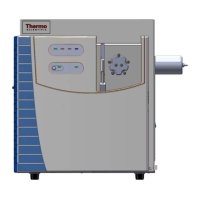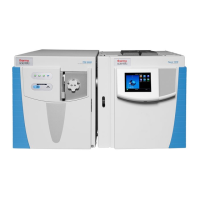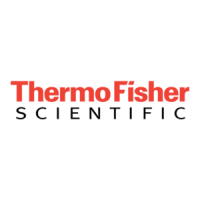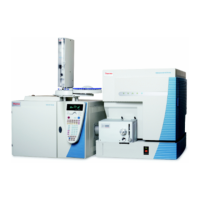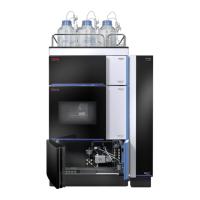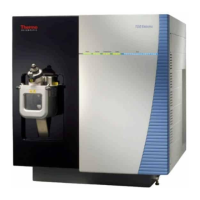
Do you have a question about the Thermo Scientific TSQ Endura and is the answer not in the manual?
| Mass Analyzer Type | Triple Quadrupole |
|---|---|
| Polarity | Positive and negative |
| Mass Range | m/z 10 - 3000 |
| Ion Source | APCI |
| Dynamic Range | 6 orders of magnitude |
| Data Acquisition | Selected Reaction Monitoring (SRM), Full Scan, Product Ion Scan, Precursor Ion Scan, Neutral Loss Scan |
| Resolution | 0.7 Da FWHM at unit mass resolution |
| Polarity Switching Speed | 20 ms |
| Operating Temperature | 15 to 30 °C |
| Operating Humidity | 20 - 80% relative humidity, non-condensing |
Compliance with Low Voltage Directive 2006/95/EC and harmonized safety standard.
Compliance with EMC Directive 2004/108/EC and various EMC standards.
Statement of compliance with Part 15 of the FCC Rules.
Details the TSQ Endura and TSQ Quantiva mass spectrometer models and their configurations.
Explains the process of liquid chromatography coupled with mass spectrometry analysis.
Details the front panel controls, buttons, and LED indicators on the mass spectrometer.
Describes various scan types like Full Scan, SIM, Product Ion, Precursor Ion, etc.
Specifies the operating mass-to-charge ratio ranges for TSQ Endura and TSQ Quantiva.
Describes the hardware that controls the flow of gases into the mass spectrometer.
Details the vacuum manifold, its components, and the five vacuum regions.
Explains the three types of vacuum gauges used to measure pressure in the vacuum manifold.
Describes the external forepumps and internal turbomolecular pump for vacuum generation.
Details the API source, its function as a sample interface, and ionization techniques.
Describes the ion optics elements that focus and transmit gas-phase sample ions.
Details the quadrupole rod assemblies, applied voltages, and mass analysis process.
Explains the high-sensitivity ion detection system and its detection modes.
Procedure for immediately powering off the mass spectrometer in an emergency situation.
Procedure for completely powering down the system for extended periods or maintenance.
Lists the routine maintenance procedures and their recommended frequencies.
How to run system diagnostics to test major electronic circuits and identify issues.
Lists part numbers for TSQ Endura and TSQ Quantiva API source interface components.
